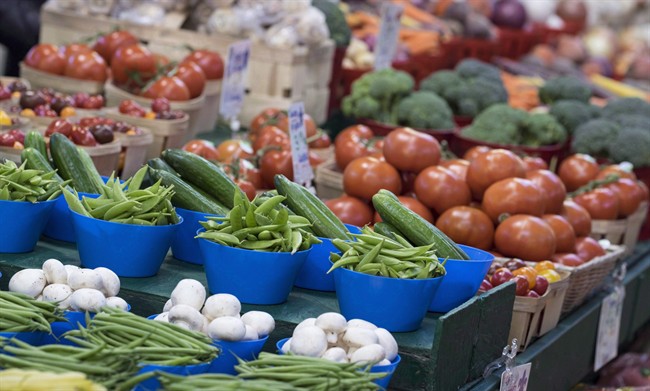OTTAWA – The annual pace of inflation in Canada picked up in April as the impact of lower energy prices moderated and the cost of food and shelter continued to rise.

Statistics Canada said Friday that the consumer price index climbed 1.7 per cent in April compared with a year ago and was up from a 1.3 per cent increase in March.
The Bank of Canada’s core inflation, which excludes some of the most volatile items, also increased. up 2.2 per cent compared with a year ago and higher than the 2.1 per cent pace set in March.
Bank of Montreal senior economist Robert Kavcic said the rise in prices counterbalances some of the weaker data that has come out for March ahead of the Bank of Canada’s interest rate announcement next week.
READ MORE: Why a rising loonie could mean a shrinking grocery bill
“The (central) bank is going to be looking at some softer data on the one hand, but pretty sticky core inflation on the other hand,” Kavcic said.
“When they meet next week, they are probably going to add all of that up and see them pretty firmly on the sidelines, still not moving on interest rates.”
In addition to inflation, Statistics Canada also reported Friday that retail sales fell 1.0 per cent to $43.8 billion in March after posting gains in January and February. Economists had expected a drop of 0.6 per cent, according to Thomson Reuters.

The weaker than expected retail sales figures followed lower manufacturing and wholesale sales results for March that were released earlier in the week.
The Bank of Montreal said it now expects the economy to contract in the second quarter due to the weak hand-off from the first three months of the year and the oilsands production shutdowns in Alberta due to forest fires.
“Going into the second quarter things are going to get quite a bit tougher,” said Kavcic, who expects to the economy to swing back to growth in the third quarter.
CIBC chief economist Avery Shenfeld said the inflation was firmer than expected, but noted that it included some one-time impacts like the drop in the loonie last year.
“Canada’s economy in the first quarter came in like a lion but went out like a lamb, as retail sales joined other indicators in pointing to a much more subdued picture in March,” Shenfeld wrote in a note to clients.
“Overall, today’s data is a saw-off for markets, with retail’s sag countered by a bit firmer CPI.”
The inflation report noted that energy prices in April were down 3.2 per cent compared with a year ago, but the drop was much smaller than the 7.8 per cent decline in March.
Gasoline in April was down 5.8 per cent compared with a year ago, while natural gas fell 12.8 per cent and fuel oil plunged 19.3 per cent. The moves compared with drops of 13.6 per cent, 17.4 per cent and 25.8 per cent respectively for March.
Meanwhile, fresh vegetables were up 11.7 per cent year-over-year in April, food from restaurants was up 2.7 per cent and passenger vehicles gained 4.6 per cent. Electricity costs were up 6.5 per cent.
Prices were up in seven of the eight major components compared with a year ago.
The clothing and footwear group was the only one of eight major index components to see a drop. It moved down 0.2 per cent. Women’s clothing slipped 0.5 per cent, while men’s clothing was unchanged.
Prices were up in nine of 10 provinces compared with a year ago. Alberta held steady.



Comments